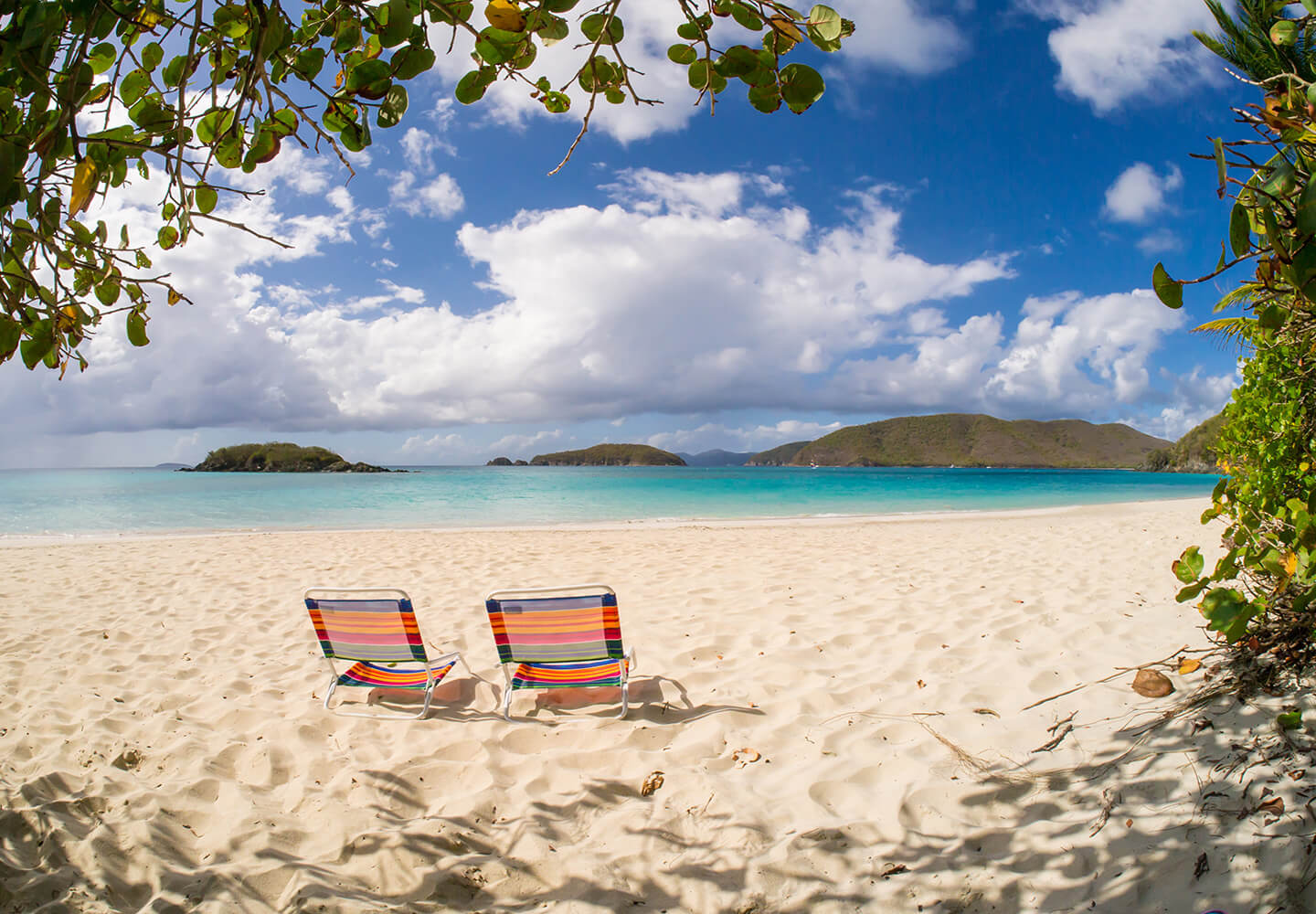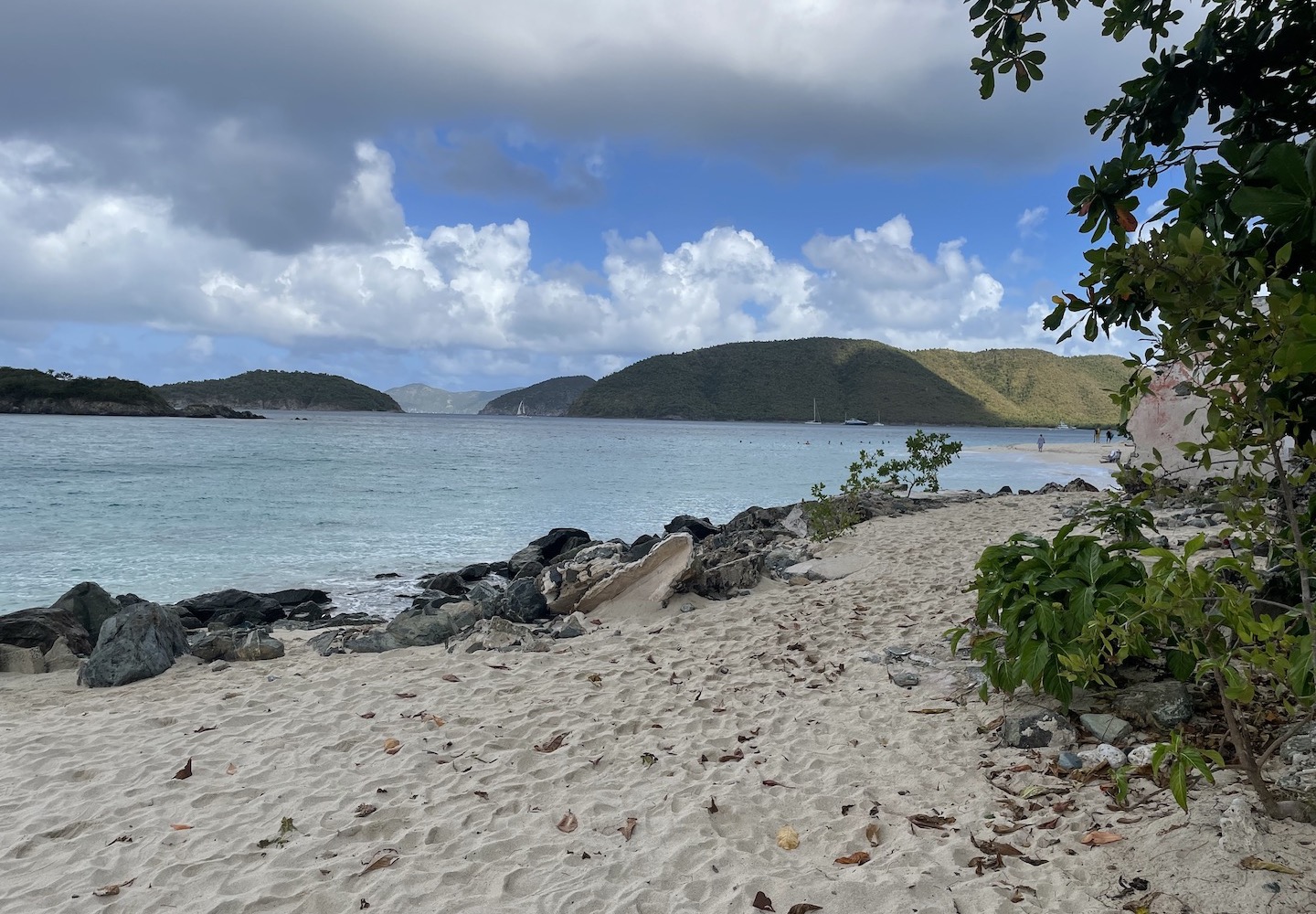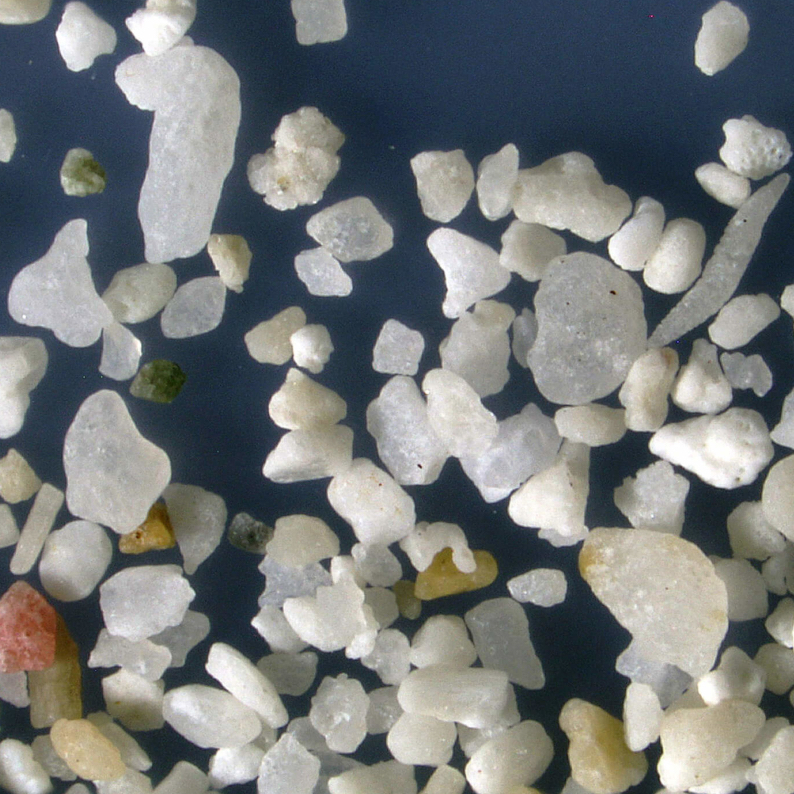
Although St. John is a volcanic island and part of a submarine mountain range extending from Cuba to Trinidad, sand on recreational beaches is primarily biogenic. This beach sand is relatively larger than other samples from St. John and features some colorful red grains in addition to white and tan biogenic grains along with some black grains of volcanic origin.


In the lower magnification a red patch of the colonial foraminifera Homotrema and a translucent mollusk fragment with parallel linear markings are present near the center of this image to the right and left of a white finely dimpled fragment of a worn foram. Rough edged dark greenish-black grains of volcanic origin are prominent at the bottom center edge of the lower magnification. In the higher magnification a well-preserved calcium carbonate skeleton of a foram colony with nicely aligned holes is present immediately upper left of center and the linear markings of the translucent mollusk shell chard is present at the lower right next to the scale bar.
Geographic Overview
Only 9 miles long and 2 miles wide, St. John boasts of lush emerald mountains, hills and valleys without many flat areas, and soft white coral sands on numerous near-deserted tranquil beaches. The coast has coral reefs full of sea life with coastal areas characterized by many protected bays. Cinnamon Bay is a top attraction for swimming and snorkeling.
Sand Gallery

A red patch of the colonial foraminifera Homotrema and a translucent mollusk fragment with parallel linear markings are present near the center of this image to the right and left of a white finely dimpled fragment of a worn foram. Rough edged dark greenish-black grains of volcanic origin are prominent at the bottom center edge of the lower magnification. A well-preserved calcium carbonate skeleton of a foram colony with nicely aligned holes is present immediately upper left of center.

Two microsnail shells, one white and one translucent, are present at the center of this image. White chunks of sand with irregular unevenly spaced holes are fragments of shells with evidence of predation and are above and below a dark sand grain of volcanic origin. A large fragment of mollusk shell with faint brownish tan markings dominates the upper right side of this image.

In this higher magnification a nicely preserved calcium carbonate skeleton of a foram colony with nicely aligned holes is present immediately left of center. Translucent bits of mollusk shell with brown patches are at the lower left and a translucent mollusk shell with linear markings is present at the bottom center of this image. The glistening white foamy appearing sand grain with indistinct openings on the right is possibly also a foraminifera species.
A white fragment with parallel tan linear markings at the center is a mollusk shell fragment (bivalve shards) and is immediately above a dark greenish fragment of a sea urchin spine. White fragment grains with variously sized holes are pieces of shell with evidence of predation (drill holes from predation). A small nicely preserved white microsnail shell is present to the right of center toward 3 o’clock (microsnail shell). Volcanic sand grains are present at the left edge.





















